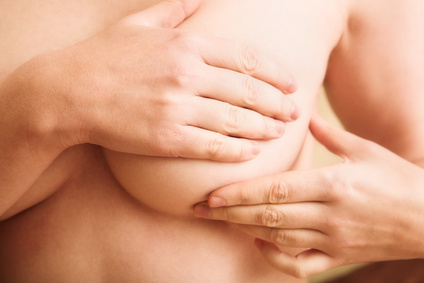“(NaturalNews) It’s well-established that exposure to ionizing radiation can trigger mutations and other genetic damage and cause normal cells to become malignant. So it seems amazing how mainstream medicine frequently dismisses the idea that medical imaging tests from mammograms to CT scans could play much of a role in causing breast cancer. Take this example from the web site for Cornell University’s Program on Breast Cancer and Environmental Risk Factors:
In answer to the question “Is ionizing radiation a cause of breast cancer?”, the Cornell experts say “Yes” and note “.. female breast tissue is highly susceptible to radiation effects.” But then they pooh-pooh the possible hazard from mammography x-rays saying the risk …”should not be a factor in individual decisions to undergo this procedure. The same is true for most diagnostic x-ray procedures.”
If that’s not confusing enough, they turn around and state: “Nonetheless, unnecessary radiation exposures should be avoided and continued vigilance is required to ensure that the benefits associated with specific procedures outweigh the future risks.”….
I am personally not a fan of mammograms at all, and have done a lot of study into the negative effects of the radiation, the tissue damage which occurs from the “squishing” of the breast, and the unreliable results where there are an unacceptable number of false positives, and on the other hand, missed tumours. Dr. Sherrill Sellman in her upcoming Australian Tour will be talking about these risks, and her research findings.
With a book titled “Mothers, What You MUST Know to Protect Your Daughter’s From Breast Cancer”, Dr Sellman is an expert on this subject.
There are safer alternatives to mammograms available in Australia, but unfortunately they are not well-known as yet. These new technologies can be used as a stand alone test, or can be used in conjunction with mammograms for a more comprehensive diagnosis. Some women may choose to use these methods in an alternating pattern with mammograms, so that their lifetime exposure to radiation is reduced.
Jo Firth from Safe Breast Imaging had this to say recently, about what they were finding with their MEM technology:
“Over the past year, I have worked in over 100 doctors and naturopath clinics around the country. I have been more and more impressed with the MEM as we gather the data, and look for patterns and trends. I believe we are really looking at novel information.
We use the MEM electrical impedance technology, looking at the electrical properties of breast tissue. Women find it useful for:
1. Lumps – whether we have cysts, fibroadenomas, lipomas or a suspicious mass. Good correlation to mammogram and ultrasound.
2. Hormonal imbalance – high relative oestrogens show up, and this is usually symmetrical if a hormonal problem.
3. Behavioural changes – often chemical changes and increased oestrogenic activity will show up in the pictures that correlate to symptoms women feel, even if they have a clear mammogram. eg more lumps in one breast, more sensations, trouble breastfeeding, etc. I have cases where women have problems for decades before getting a diagnosis.
4. Congestion – I am concluding that specific areas of “congestion” I see could be toxins and/or heavy metals that are storing in breast tissue. Fatty tissue is low in conductivity and I am seeing high conductivity. In these women who have a mammogram, nothing is showing up as a lump, even though it looks that way in the picture. When we see this, we suggest looking at the liver to start with.
The MEM looks at a number of parameters including structure, size (of lumps), depth, conductivity, asymmetry, comparison to the norm, hormonal imbalance, etc. With this information, it can help a patient and her practitioner make a decision about what to do next.”
For more information go to the Safe Breast Imaging website, feel free to give Jo a call and to find a doctor and clinic in your area who is working with this technology – or come and see Jo at the Dr. Sherrill Sellman Tour where she will be happy to have a chat and provide more information.
Leisa
![]()

No comments yet